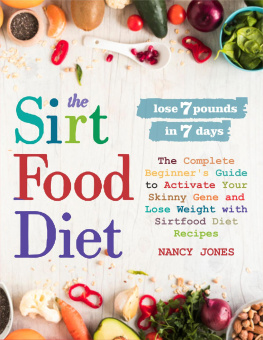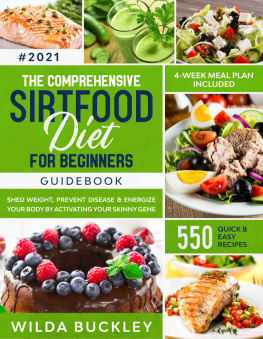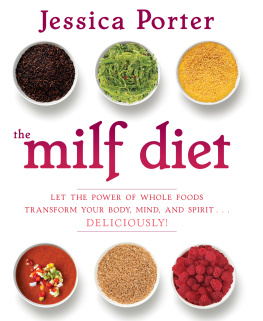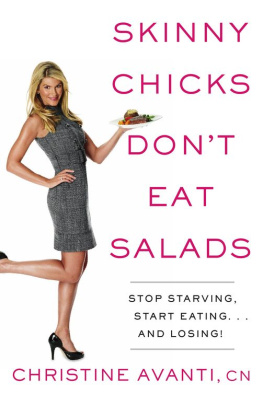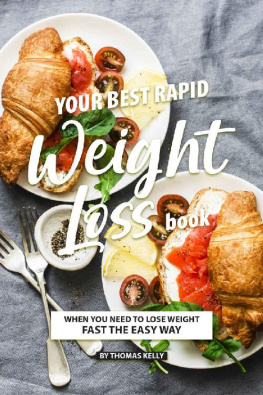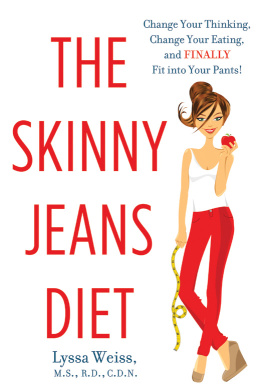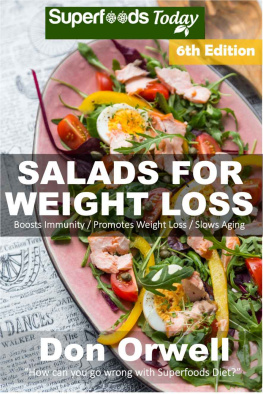

For my grandparents, Luigi and Rosemary Avanti.
Thank you for teaching me to love and respect real food.
Our family food traditions and recipes had a tremendous influence on this book.
Contents
INTRODUCTION
I Rediscover Butter
Like many in the field of nutrition, Ive struggled with food issues. Having overcome my own weight-loss difficulties, I arrived at a point in my life where I watched what I ate and steered clear of fatty foods and foods high in processed carbs. So I was admittedly nervous when, in order to pursue my lifelong passion for cooking, I enrolled in culinary school. I knew that, as a student learning to cook traditional French cuisine, Id be expected to eat all of the butter-laden foods Id so carefully avoided for so many years.
Much to my surprise, after 9 months of cooking and eating foods like blinis with sour cream and caviar and buttery French pastries galore, I didnt gain an ounce! Plus, used to dealing with my clients food fears in my nutritional counseling practice, I was delighted that in culinary school, not a single food was vilifiedprotein, unrefined carbs, and fat were all on the menu. Nothing was off the table as long as it was fresh, natural, and not processed in an unhealthy way. Not to mention the fact that, despite being exposed to so much delicious food, I wasnt driven to overeat. In fact, I began to experience a vitality and energy I hadnt had before. Best of all, I was reintroduced to a style of eating I had, without realizing it, forsaken many years earlierfood made from fresh, whole, natural unprocessed ingredientsreal food.
I use the word reintroduced because, having grown up on my grandparents ranch, I was actually raised on a real-food diet, unlike many in the U.S. Their ranch was in Gilroy, California. My grandfather was an immigrant from Bari, Italy, and food played a central role in our family. Growing, preparing, and even preserving food was a normal part of my everyday life from the day I was born until I turned 18. My grandparents raised pigs, lambs, goats, cows, and chickens. I recall countless times helping my grandfather slice meat with an enormous meat slicer in one of our many barns. I also recall picking oranges, apples, plums, cherries, figs, persimmons, apricots, raspberries, boysenberries, prickly pears, cucumbers, green beans, squash, watermelon, artichokes, and grapes from our huge grapevines. We pickled, jarred, fermented, and prepared everything we grew, and it always tasted fabulous! So my experience cooking and eating real, natural ingredients in culinary school was like attending a reunion with old friendsfriends I had ditched in favor of a low-fat, low-calorie diet after becoming immersed in the fitness culture of Los Angeles as a model and aerobics instructor in my twenties.
As it happened, I was becoming reacquainted with fresh, natural, whole ingredients about the same time a slow but steady real-food movement was taking hold. Caught up in the wave of it, I began conducting extensive research, reading the work of real-food gurus like Michael Pollan, Nina Planck, Weston Price, Marion Nestle, Mark Bittman, Sally Fallon and Mary Enig. I learned everything I could about the real-food movement. Thats when I came to understand that the reason my clients (not to mention nearly the entire country) were controlled by food was that the factory food industry was actually cooking up food in its labs that was engineered to make consumers overeat.
And why not? The more we eat, the richer the industry grows. I learned that the highly processed foods on the American menu are designed to contain so much refined carbs, added sugar, fat, and salt, and so little fiber and nutrients, that they result in actually making us crave more fatty, salty, sugary food. This realization gave me a deeper understanding of the challenges my clients facenot to mention my own weight-loss struggles. When I was 29, my grandfather, who was really more like a father to me, passed away, and I became immersed in grief. Like so many do, I turned to food to numb my sadness. For several years, I was addicted to sweets, and I had the 30 extra pounds and the double chin to prove it. The more research I did, and the more I learned, the more convinced I became that the sugar, fat, refined carbs, and salt in factory foods were at the heart of the current obesity problem in the U.S. and in other countries that consume a Western diet. And thats when I decided to revamp my own diet program to address this problem.
Prior to this life-changing epiphany, I hadnt thought twice about recommending foods like protein bars, diet sodas, sugar substitutes, and fat-free cheese to my weight-loss clients. Thats because my focus wasnt on whether the food had any added sugar or harmful additives or preservatives, or how it was processed; my focus was on whether the food would help my clients drop pounds. The first step for me toward embracing a real-food diet philosophy came when I began to understand the importance of eating to stabilize blood sugar and thus prevent cravings. In fact, this is the focus of my first book, Skinny Chicks Dont Eat Salads. When I began to fully embrace a real-food lifestyle, I came to understand that eating real food is the most painless way to keep blood sugar stable and avoid the cravings that come with overly processed factory foods.
My belief that the addictive qualities of factory food are behind the obesity crisis in the U.S. was cemented after I became the nutrition director and executive chef for Passages Malibu, an alcohol and drug treatment center. During my time at Passages, I came face to face with addiction. The patients at Passages were addicted to a variety of substances, including alcohol, cocaine, and heroin. However, many of the issues these folks faced with their substances of choice were the same ones my weight-loss clients facethe same cravings, feelings of powerlessness, and depression. My work at Passages also validated the weight-loss benefits of switching to a real-food diet. When I started at Passages, I gave the kitchen a complete overhaul. Refined sugars, refined flours, and any other refined carb, as well as all overly processed foods devoid of nutrition, went into the trash. In fact, many of the recipes in this book are served at Passages every week. As a result, overweight patients who enter Passages are now actually losing weight as an added bonus to their recovery. The healthy nutrition program Ive instituted at Passages now plays a role in the healing process of its patients. Ive gotten many letters and e-mails from patients at Passages thanking me for helping them learn to take better care of their bodies through healthy eating.
My years of helping clients with weight loss, my reintroduction to real food in culinary school, and my experience helping folks with addiction gain control of their health and weight culminated in making me realize the importance of switching to a real-food diet. For me personally, making the switch to real food from my previous factory food-laden diet was an interesting, and gradual, process. I accomplished it in stages, tackling one food issue at a time. I began by educating myself about which fats were processed in ways that did not make them dangerous or unhealthy. Then it was on to learning the dangers of refined carbs. Next, I learned about dairy and meat products. Then I turned to figuring out the whole seafood conundrum. One week I tackled salt; who knew that table salt is processed with harmful chemicals, and that 80 percent of our salt intake in this country comes from factory foods? It was a great day when I bought my first shaker of Celtic Sea Salt! Then I began hanging around farmers markets, chatting up farmers and vendors in an effort to learn more about how they grow and raise the foods they sell.
Next page

